
18 minute read
RG Newsletter Competition Update
ATTENTION ALL REGIONAL GROUP EDITORS!
Beginning with your January 2022 edition, for the EFV8CA newsletter competition, send your regional group's newsletter to: Bill Wilson (a member and newsletter editor of the Peach State RG #160) at BillwV8@yahoo.com 404-660-6902

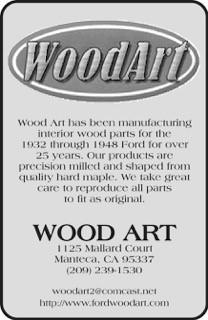
JOIN THE DISCUSSION!
Did you know that the V-8 Club is on Facebook and Instagram?
Follow us and connect with others posting photos of their cars, projects and more! Ask questions and get answers in real time. Share Regional news and updates. All this and more!
INSTAGRAM @EARLYFORDV8CLUB
FACEBOOK EARLYFORDV8CLUB
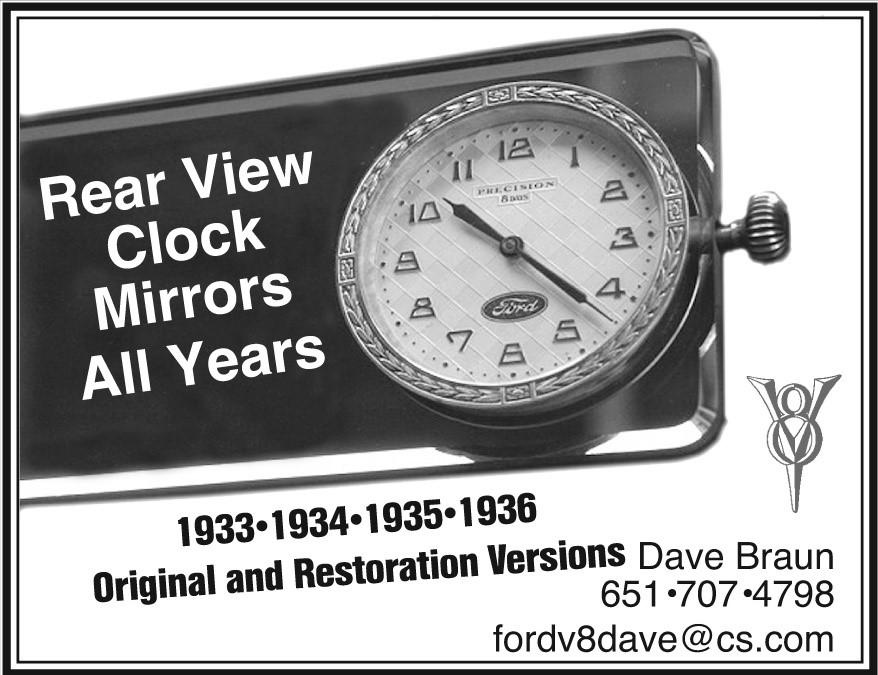
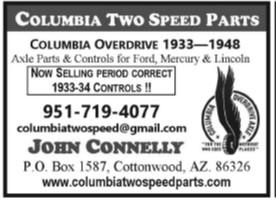
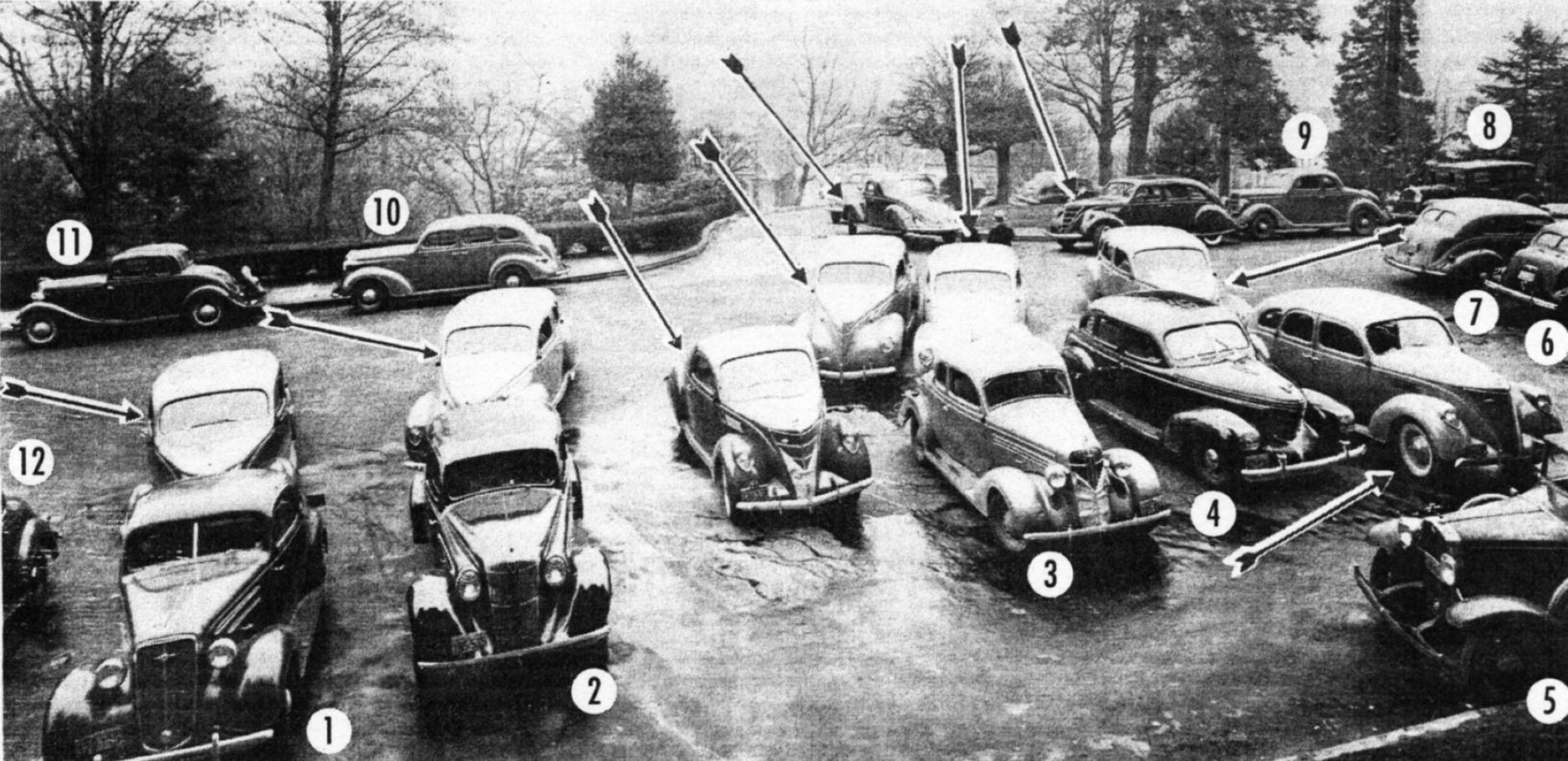
THE ALL AMERICAN FORD
A Photographic Scrapbook of the V-8 Era Doctors Love Their Zephyrs!

Arrows point to the nine Lincoln Zephyrs in the doctor’s parking lot at St. Vincent’s Hospital, in Portland, Oregon, on a late winter day in 1938. There are four 1938 models, five are 1936 or 1937s. The Portland dealer, Olsen-Francisis Motor Company, had really done a fine job on selling Lincoln Zephyrs to professional men. Among the other cars scattered about the lot, we can be see distinctive and unusual automobiles, as well as more conventional ones. Way of the Zephyr magazine December, 2014.
In this case, we may want to say “The All American Lincoln” Way back in December 2014, Dave Cole had an article in the Way of the Zephyr magazine on all of the Lincoln Zephyrs that were owned by doctors at St. Vincent’s Hospital in Portland, Oregon. Remember this, I had the opportunity to ask a fellow parishioner about it.
Her father was a young doctor in Idaho in the late 1930s to early 1940s. They later moved to San Marino, California, during WWII. I asked her whether or not her dad liked Lincoln Zephyrs. She was surprised and commented that Zephyrs were all that he drove before the war! Anticipating a shortage of consumer goods, if the war came, he went out and bought a new refrigerator and a new 1942 Lincoln Zephyr to replace his 1941. The small photo at right is of her father Dr. Couglin, in front of his 1942 Zephyr.
I guess before the war the Zephyr was a pretty desirable car with young professionals. They seemed to lose this desirability in the postwar years. After the war, most doctors went to Cadillacs.
Chris Nuno San Gabriel, California
ALL PAYMENTS MADE OUTSIDE OF THE US ARE TO BE REMITTED BY CREDIT CARD (MASTER CARD/ VISA). NOW AVAILABLE FROM THE EARLY FORD V-8 CLUB OF AMERICA!
The 1940 Ford Book by Mike Kubarth $50.00 Plus S&H
Softbound ● 296 pages ● Generously Illustrated

CRIME STORIES
By John Emmering, Northern Illinois RG #8, “Road Chatter” JOHN DILLINGER’S WILD FORD V-8 DASH TO CHICAGO & BEYOND



Ford V-8 vehicles often were the choice of the gangsters of the 1930’s. Here is another account of how Ford Motor Company vehicles fit into the history of that lawless period.


After John Dillinger’s escape from the Lake County Jail on March 3, 1934, purportedly with a wooden gun, he made his way to the Main Street Garage across from the County Court House, in Crown Point, Indiana. Dillinger asked Edwin Saager, the mechanic on duty, “What’s the fastest car you’ve got?” Saager replied that it was Sheriff Holley’s car, a new Ford V-8. With that, Dillinger, fellow escapee Herbert Youngblood and hostages Deputy Ernest Blunt and the mechanic Edwin Saager were off on Dillinger’s wild dash to Chicago, Illinois and freedom.
The getaway car was a standard 1933 Model 40 Ford V-8 Tudor, which served as Lake County Sheriff Lillian Holley’s official police vehicle. Mrs. Holley assumed the office of Sheriff after her husband Roy F. “Doc” Holley, age 43, was killed in the line of duty. Deputy Ernest Blunt was forced to drive the car and was instructed to travel the speed limit. Dillinger had him stop the Ford as they headed into St. John, Indiana and tore off the vehicle’s red spotlight lens, knowing the police would be on the lookout for a sheriff’s car. Dillinger’s escape was aided by the fact that the wrong license plate number was given out for the Sheriff’s sedan.
Traveling down Indiana Route 41, Dillinger had Deputy Blunt turn west toward Illinois on 151st Avenue and continue past the state line into Illinois, near Beecher. Later, this would prove to be a fatal error on Dillinger’s part. Continuing on what became West Beecher Road, the V-8 Tudor got stuck in the mud and Blunt and Saager worked to push it onto dry pavement. Saager installed tire chains on the Ford to make it more road worthy. At this point Dillinger released his two hostages near rural Peotone, knowing it would be a long walk to a telephone and continued on to Chicago with Youngblood. Police found Sheriff Holley’s 1933 Ford V-8 Tudor abandoned in front of 1057 West Ardmore Avenue, on Chicago’s north side, on March 7, 1934.
The 1933 Ford V-8 ended up in an impound lot and was routinely sold at auction by Lake County. A Milwaukee man purchased the car and later moved to Maine, not realizing the car’s significance. (A Lake County, Indiana man, Roger Pace located the car recently. It returned to Crown Point for a parade on April 3, 2021. A setting for the car’s permanent display in Crown Point is being sought. )
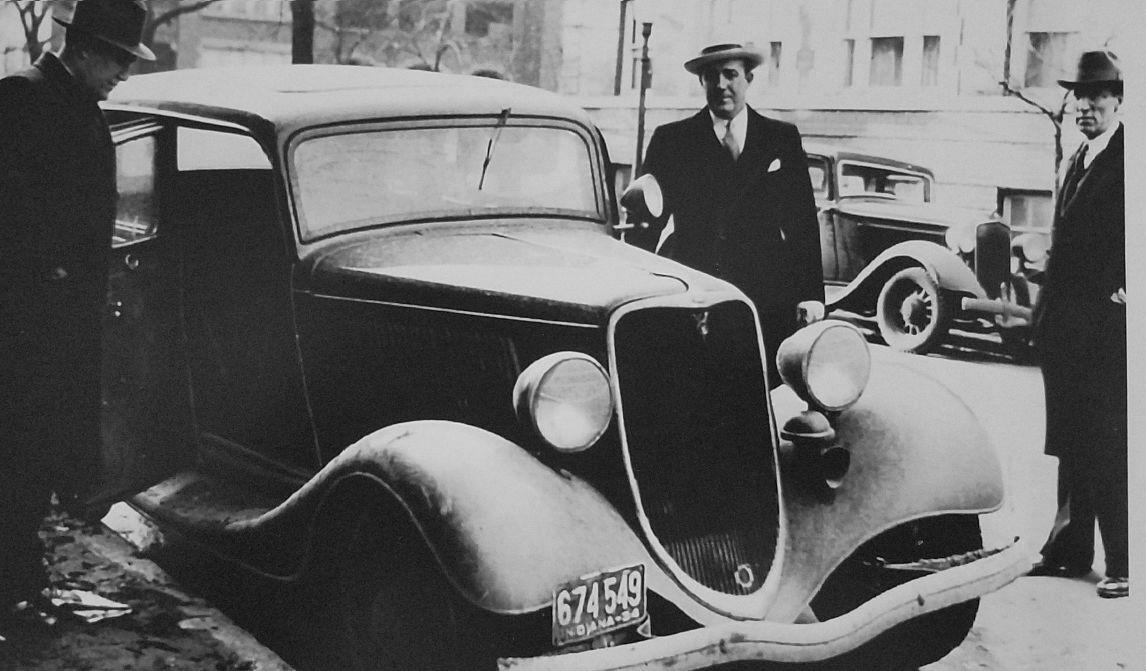

CRIME STORIES

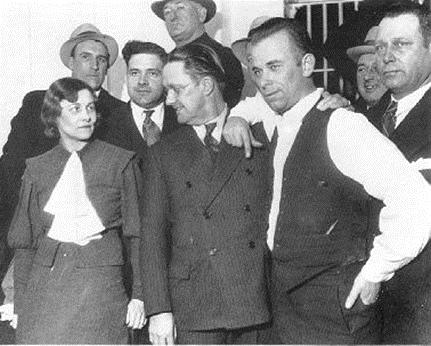
Sheriff Lillian Holley, left, and prosecutor Robert Estill, center, stand with outlaw John Dillinger at the jail in Crown Point.
Concluding a short stay in Chicago, Dillinger headed for St. Paul, Minnesota, joining forces with the Baby Face Nelson gang. Soon, they robbed banks in Sioux Falls, South Dakota and Mason City, Iowa. The gang was cornered by federal agents at the Little Bohemia Lodge, in Manitowish Waters, Wisconsin, on April 22, 1934, in a poorly conceived raid. When the gangsters were alerted to the approach of the agents by barking dogs, Dillinger and his fellow gangsters Homer Van Meter and Jack Hamilton, escaped through a rear door into the woods, as they were unable to access their stolen 1934 Ford V-8 Fordor that was parked in front. Heading through the woods, the trio located Robert Johnson who lived in a cabin at nearby Mitchell’s Rest Lake Resort and forced him to drive them out of the area in his 1930 Ford Model “A” Coupe. Shortly thereafter, they freed Johnson and drove the Model “A” toward Minnesota.

In an exchange of gun fire with the police, south of St. Paul, Minnesota, Jack Hamilton was badly wounded. The Model “A” was ditched after the gang seized another 1934 Ford V-8 from Roy Francis, a power company executive out for a ride with his wife and baby. After being ejected from their vehicle, the Francis family walked two miles to a service station where they phoned the authorities. The use of Sheriff Holley’s V-8 and the one stolen from Roy Francis were the subject of a local Ford dealership newspaper

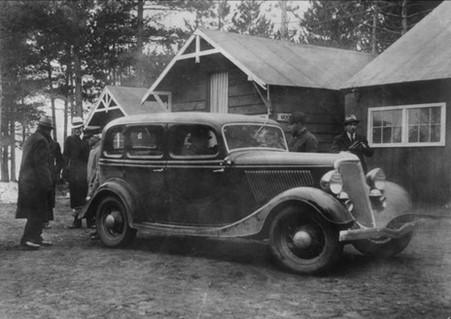
1934 V-8 Sedan stolen by the Dillinger gang. Unable to access it during the raid of their hideout, the gang left via the back door leaving their sedan out front.
CRIME STORIES


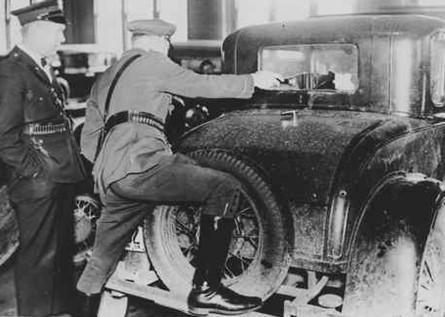
Model A stolen by Dillinger when escaping Little Bohemia, in Wisconsin. This car was used in the film “Public Enemies” and last sold in 2010, for $165,000.
ad, which asked, “Will they catch
John Dillinger? Not until they get him out his Ford V-8!”
Dillinger, Van Meter and Hamilton left St. Paul and headed for a hideout in Aurora, Illinois. There, in Aurora, Hamilton died of his injuries. The gangsters buried Hamilton in rural Kendall County, near Oswego. The 1934 Ford V-8 obtained in Minnesota was abandoned on the north side of Chicago, as a false lead, as the pair headed to Ohio and lived out of a panel truck for a couple of weeks. After a daring bank robbery in South Bend, Indiana, where Van Meter was wounded, the pair split up. Dillinger choose to melt into the north side of Chicago, using the name Jimmy Lawrence and moving
in with a 26 year old waitress named Poly Hamilton and 42 year old Anna Sage, a Romanian immigrant who was known as a notorious Madame.
When Dillinger crossed the state line into Illinois, after stealing Sheriff Holley’s 1933 Ford, committing interstate auto theft, a federal crime, he invited the participation of J. Edgar Hoover’s Bureau of Investigation, who had been on his trail ever since.
The bureau was contacted by Anna Sage, who thought turning over Dillinger could prevent her pending deportation. On the evening of July 22, 1934, Dillinger was killed by Federal agents, as he exited the Biograph Theater, on North

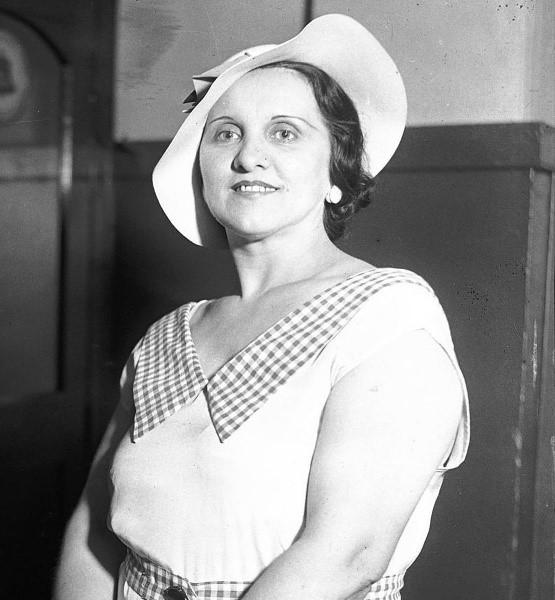
Anna Sage in July 1934. Sage, had been with Dillinger when he was shot and killed outside the Biograph Theater on July 22. Sage said she made a deal with the FBI so that she would not be deported to Romania for
running a brothel. (Chicago Tribune historical photo)
CRIME STORIES


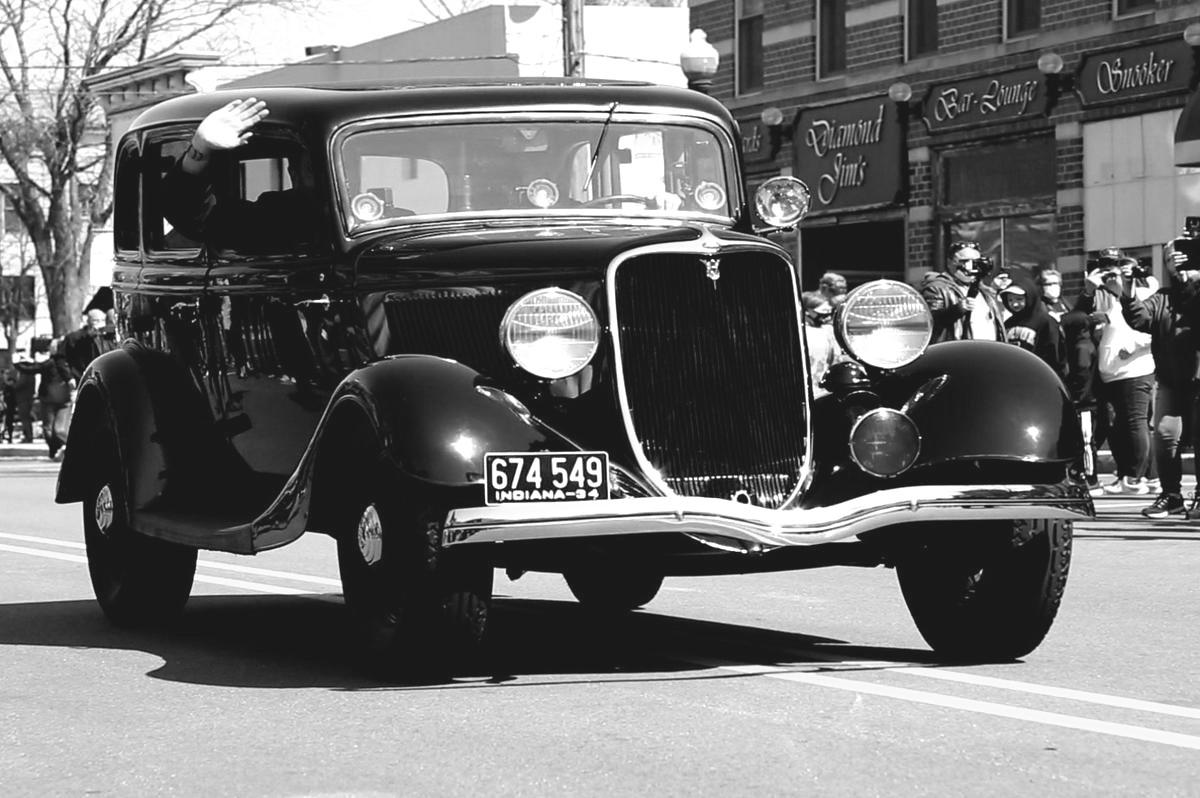
Sheriff Holly’s Ford V-8 returned to Indiana for a parade.
Lincoln Avenue, in Chicago.
Dillinger had really embarrassed Sheriff Lillian Holley when he escaped in her 1933 Ford V-8, leaving her emotionally crushed. She came under intense criticism, with the county board clamoring for her resignation. Whereas Dillinger’s life was snuffed out at age 31, Lillian Holley regained an honored standing in her community and lived to the ripe old age of 103.

$37.00 + SHIPPING & HANDLING US S&H $5.50 ● Canada S&H $46.00 ●All Other S&H $67.00.

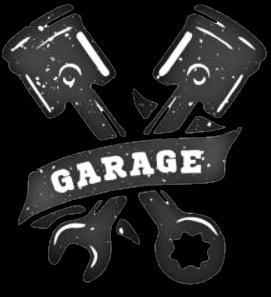

ANTIFREEZE/COOLANT FOR OUR FLATHEADS
By Ron Trella rons-garage@hotmail.com
My dad had a ritual when it came to the cooling system of his flatheads. He probably used this from his first car, all the way to his last flathead; a 1953 Ford Customline Fordor.
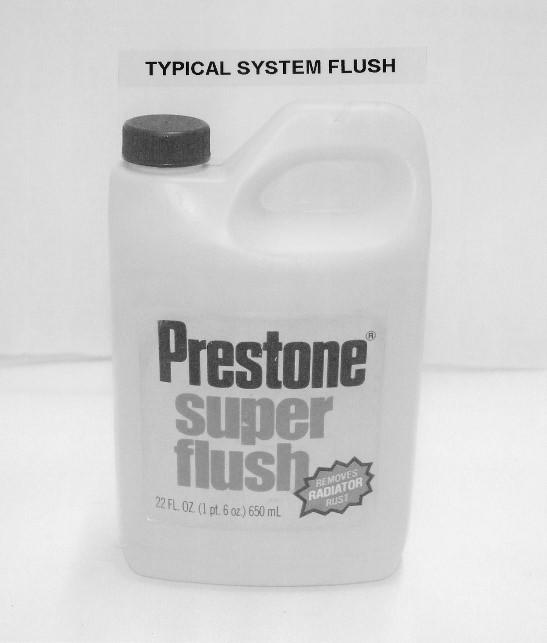
Every autumn, about late October, Dad would drain and flush the cooling system. He would install both thermostats and fill the system with a fresh amount of methanol alcoholbased antifreeze, water and a bottle of water pump lubricant.
In the spring, about May, he would again drain and flush the system. This time, he would remove both thermostats and carefully store them for the fall. The system would then get filled with fresh water and another bottle of water pump lubricant.
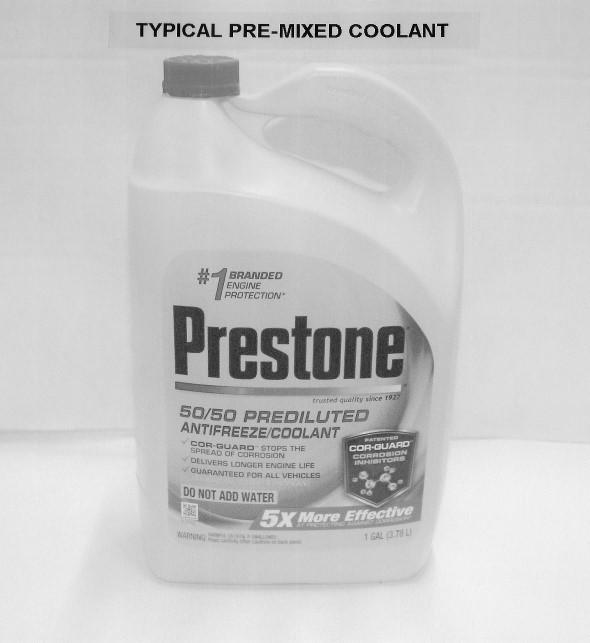
As a youth, I would watch him do this every year, until 1961, when he bought a used ’59 Ford with a YBlock V-8. This was a lot of work, more than any of us would want to do these days.
Today, we are all part of the “fix and forget” society that we live in. If we change the coolant one time, when we first buy our old car, we consider it done for a long time. We forget that nothing, coolant included, will last forever. Coolant requires periodic replacement, just like engine oil.
Methanol alcohol antifreeze fell out of favor for two reasons. First, it tended to accelerate the corrosion in the cooling system. Second, as most early automotive cooling systems were not pressurized, it evaporated over time.
Ethylene Glycol was first produced in 1856, but did not see use in automotive cooling systems until about 1926. It was used extensively in military vehicles during World War II and after the war, became widely used in passenger cars and trucks. Ethylene Glycol is also used in the production of polyethylene, dynamite, other chemicals, and vaccines. We all know water freezes at 32 degrees F. Combine Ethylene Glycol with water in a 50/50 mixture and the solution does not freeze until -35 degrees F. This 50/50 mixture also raises the boiling point of water from 212 degrees F, to 223 F. Add pressure to the cooling system, and the boiling point increases about three degrees F for every one pound of pressure you can add. So, a flathead with a 4 lb. cap will raise the coolant’s boiling point to 234 degrees F.
Ethylene Glycol coolant is green in color and it was the most common coolant used in cars built before the 1990’s. Today, there are five other automotive coolants on the market, for specific vehicles. They are all colored differently, to distinguish them and are orange, yellow, turquoise, purple, pink or blue. Most of these coolants came on the market as auto manufacturers began to use aluminum radiators, heads and blocks. They have specific additives to prevent corrosion in these modern engines. Most are also classified as “extended life” coolants, capable of lasting five years before changing is required. There are now some Ethylene Glycol coolants on the shelf that are marketed as “extended life” as well.
With all of this new technology, the old green coolant still seems the best choice for our old cars. Used in a “clean” cooling system, mixed at the proper percentage and with the correct water, it can still provide us with years of good service.
Let us look at those factors, one by one. First, you need a clean cooling system to get the most out of coolant. Any rust in the system will prevent proper cooling. We all know that flatheads did not have the best designed cooling systems to begin with. Early flatheads, before 1937, had the water pumps mounted


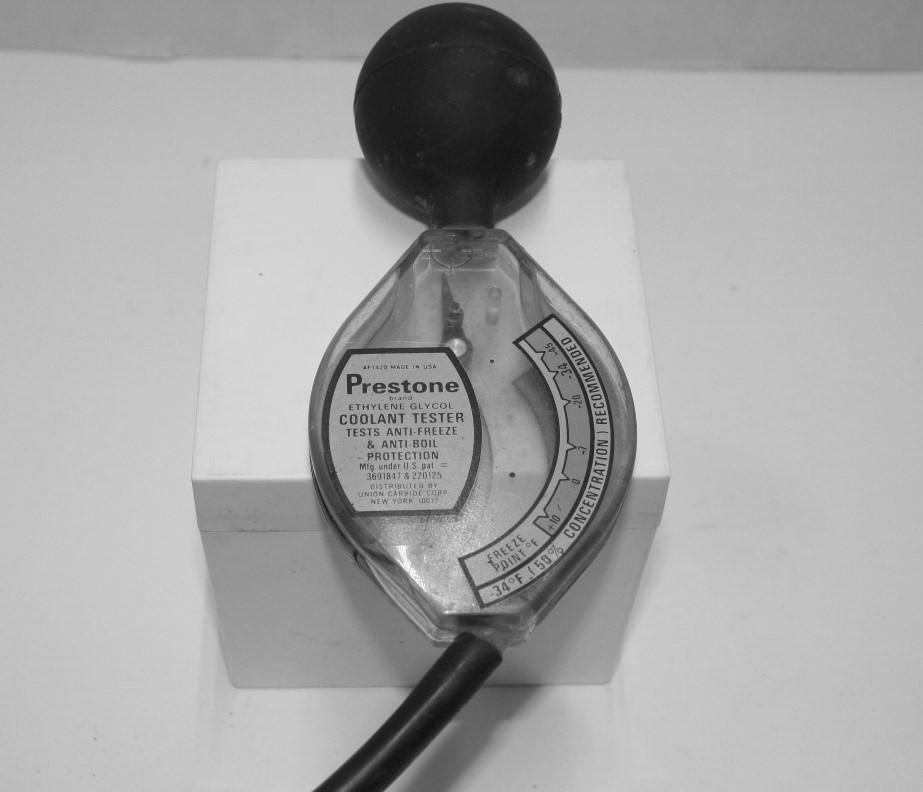
in the heads, which was not the best placement for circulation. All flatheads have the center cylinders exhaust ports running through the water passages, adding heat to the coolant. Adding a layer of rust to the walls of the water passages is like adding insulation between the cast iron and the coolant. There are several cooling system flushes on the market, which if used properly and flushed with water after treating, can reduce rust buildup in the system.
Using a proper mixture of Ethylene Glycol and water is especially important. Typically, this means a 50/50 mixture. This seems to give us the best results for freeze protection, overheating protection, lubrication of the water pump seals and will have enough corrosion inhibitors to prevent the formulation of rust in the system. Higher percentages of Ethylene Glycol than 50/50 can cause some of its silicates, which
prevent corrosion, to drop out of solution and cause problems. Too little, and you are not getting the freeze/boil/corrosion protection you need.
The water you use is also important. 50 years ago, when I started out working on cars, any tap water would do. Later, we found out the chlorine in city water systems is a corrosive. Avoid using city water if possible. Well water, in most areas, will have too much mineral content to be good for the system. These minerals drop out of the solution and coat the water jackets, causing the potential for overheating. Well water, that has been processed by a good water softener system, may be a better alternative. In the 1970s, most mechanics were recommending using distilled water to mix with the antifreeze. Years later, we found out that this was not always the best solution, as the ion neutral water tended to pull iron ions from the engine. Nature seems to always want to seek equilibrium. In my opinion, the best answer to this is to use a coolant that is already mixed to a 50/50 solution by the manufacturer. There, the company chemists have controlled the purity of the water to the best level for use in a cooling system. Now I know that many people resist these 50/50 mixed coolants. The biggest argument I have heard is that they do not like paying for water. But the convenience of not having to mix coolant and always having pre-mixed coolant around to add to the system when needed, seem to be strong arguments for pre-mixed coolant. My only caution is making sure that after you flush a system, you get all of the water out before adding the pre-mixed coolant. In a flathead, with no block drains, that may mean jacking up the rear of the car to ensure that all of the water is out of the block, before adding fresh coolant.
Testing the strength of the coolant in your engine is easy with the common hydrometers we have used for years. There are two types of hydrometers, in use today. They are the conventional float-style and the ball-style. Both are inexpensive and easy to use. Remove the radiator cap, when the system is cool, take a sample of coolant, read the scale on the hydrometer, or count the numbers of balls floating.
Today, we have another way to check the coolant and that is with test strips. The test strips usually have three chemicals on them that you can check the freeze/boiling point, reserve alkalinity and the pH level of the solution. Although the freeze/boiling point is important, the other two tests give a good indication if the coolant is OK, or needs to be replaced. The coolant should always be on the alkaline side. As coolant ages, it becomes acidic and that leads to deterioration and corrosion.
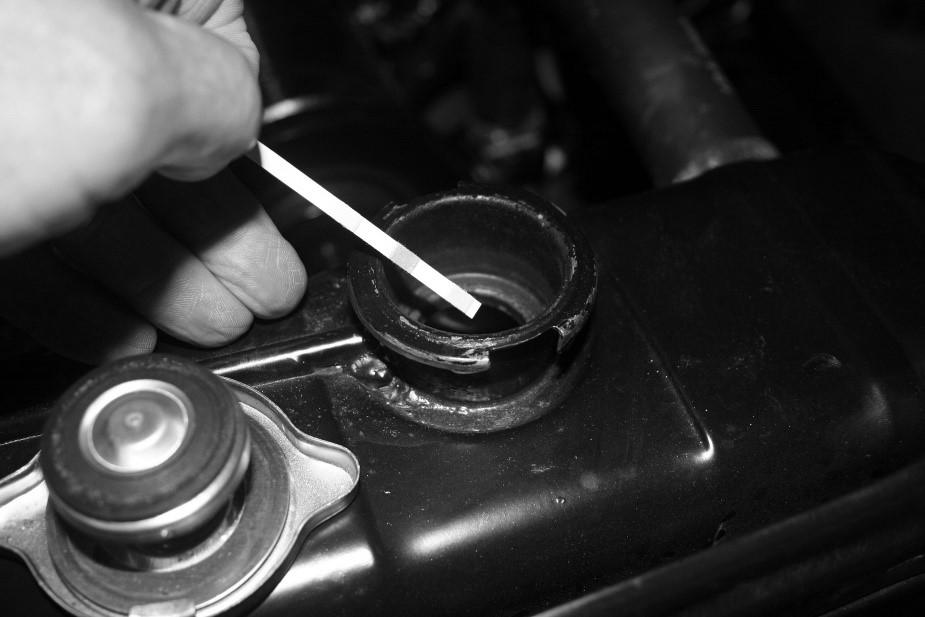
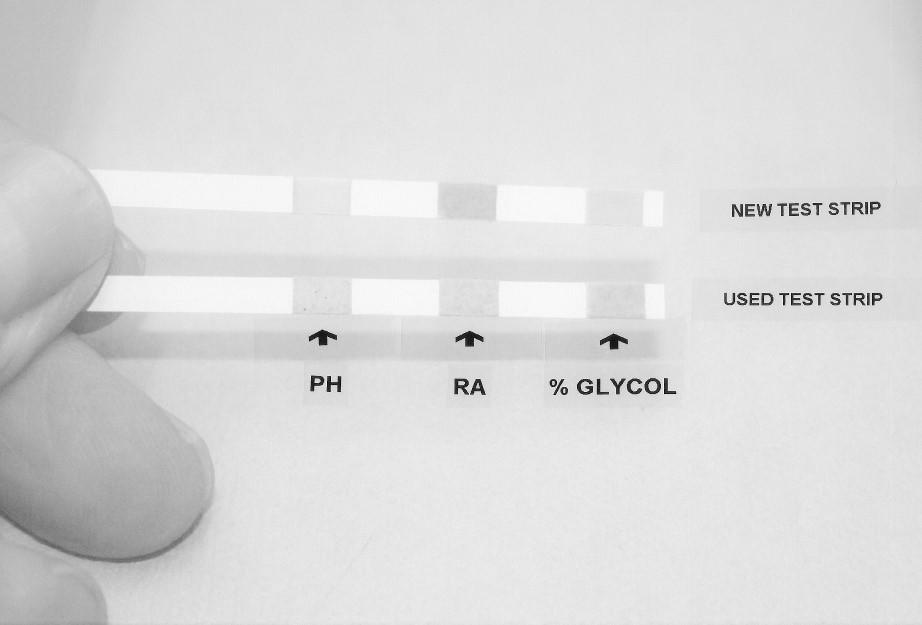
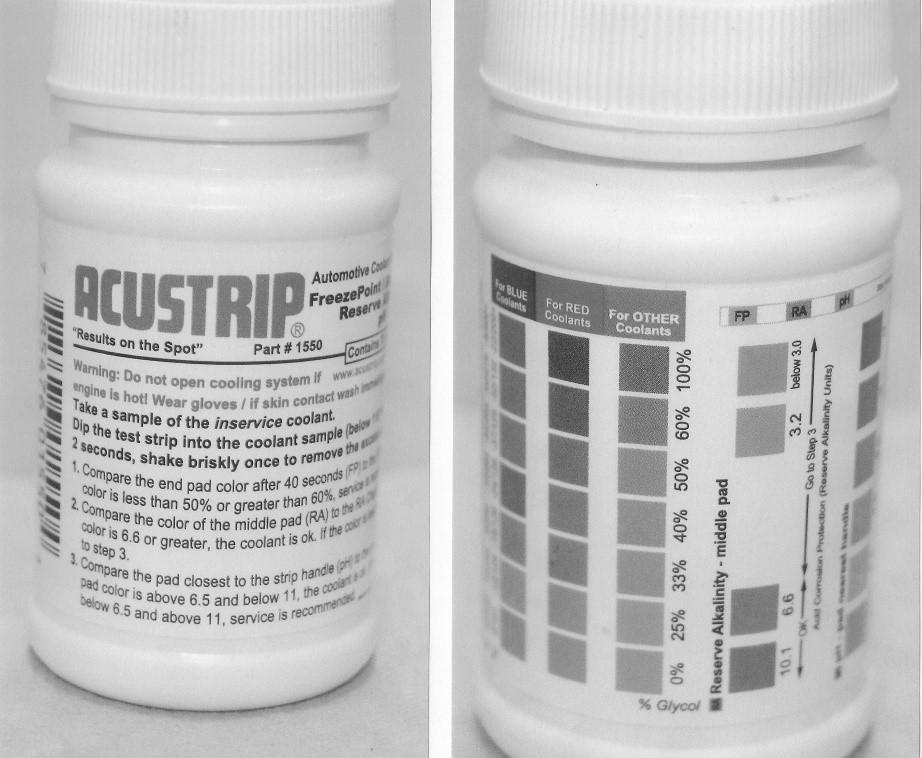
Test strips usually come in a bottle of many strips. The brand shown here has 70 strips and the cost is slightly over $30.00. Certainly, too many for an individual owner to ever use up before they expire. But would be economical for a group of friends or a club to purchase. There are also a lot of shops that use these strips and would charge a minimal fee to check the system. It could even be free if another service is performed.
To use the test strips, the coolant should be below 110 degrees F. The chemicals on the strip are offset to one side to provide a handle to hold the strip. The strip is dipped into the coolant for two seconds and the excess coolant is shaken off of the strip. The strip is set aside for 40 seconds and then compared to the charts on the bottle.
The chemical on the end, furthest away from the handle, tests for the percentage of ethylene glycol in the mixture, like hydrometers.
The middle chemical measures for Reverse Alkalinity (RA). Reverse alkalinity is an indication of the level of buffering agents left in the coolant. The buffering agents are there to keep the solution on the alkaline side of the pH scale.
The last chemical shows the actual pH level of the coolant mixture. Water typically has a pH of around seven. Anything below seven is considered acidic. Anything above seven is an alkaline solution.
Two test strips are shown here. The upper strip is a new unused test strip. The lower strip is the test strip that was used to sample coolant that has been in use for four years, in my own 1950 Ford Coupe. It shows that the coolant has a mixture of 50% glycol. The reserve alkalinity is somewhere around eight. The pH level of the coolant is around nine.
All indications are that this coolant is still in good shape, even at the four-year mark. Most manufacturers and the coolant producers recommend coolant be replaced every two to three years, or 24,000-36,000 miles, on daily driver cars. Based on the coolant test strip, I could continue to use this coolant a little longer. I’ll check it annually, but will want to replace it before the values drop off significantly.
I have seen old, neglected coolant do some dastardly things to engines. As the coolant gets more acidic, it can eat its way through head gaskets, corrode the inside of the block water jackets and cause the radiator, hoses and thermostats to fail.
The whole idea about preventative maintenance prevents unnecessary repairs and failures, while saving as much money as possible. Using the modern tools we have, like the coolant test strips, flushes and pre-mixed coolants, can help you accomplish these goals.
As always, if you have specific questions or need help diagnosing a problem, you can contact me at rons-garage@hotmail.com.










